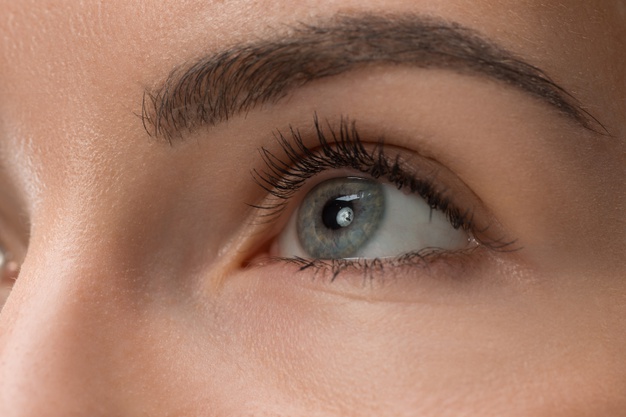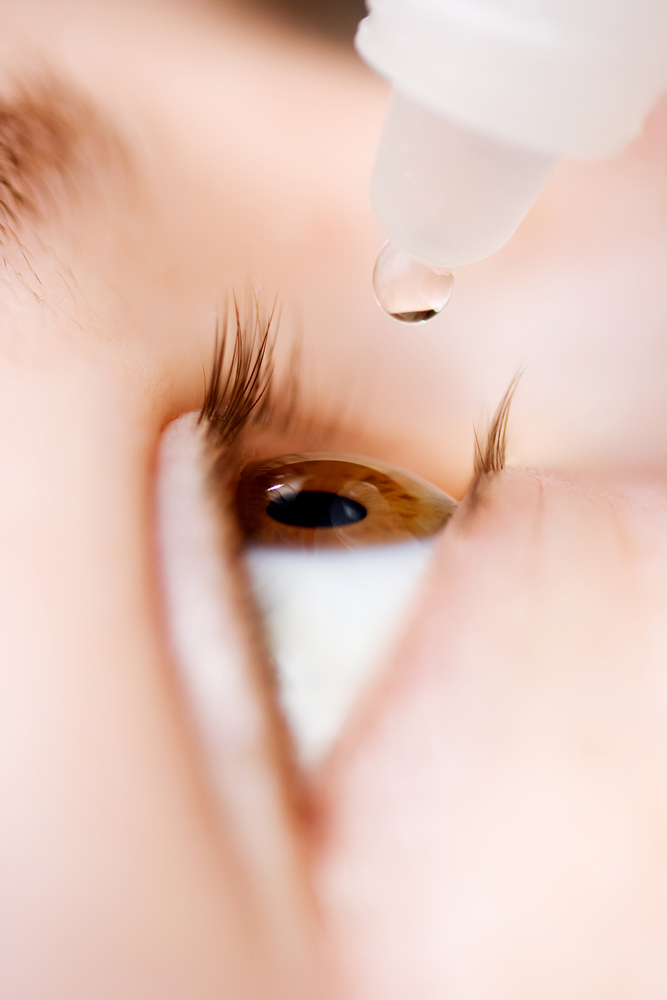Our eye contains the lens, retina and a gel-like fluid in our eye called vitreous that fills the eyeball and makes up about 2/3 of its volume. Vitreous is a gel-like fluid that maintains the shape of the eye, acts as a shock absorber and induce a slight pressure in the eyeball, to let the eyeball remain sticked to the back wall of the eye. The gel-like substance is about 98% water, but it is thicker than water because of substances that make it more viscous. Vitreous is transparent, allowing the light to transmit through it onto the retina, but as people age, some of this fluid begins to dry out, or gel lumps start to form in the fluid. This cause deterioration of other components of the eye due to age or lack of collagen around the vitreous, eye floater start appearing. Eye floaters are created by lumps of protein that accumulates in the vitreous humor of your eyes. They appear as dots, strands, strings, squiggles, other figures like chromosomes or spider webs. Mostly are shadowy lines on the retina due to the microscopic debris in the eye’s vitreous humor. Eye floaters can result from an eye injury, after cataract surgery, due to eye inflammation or after laser surgery of the eye. Nothing is required to break them around; they remain afloat in the eye for several months. They settle down somehow, but sometimes they remain hanging in the eye, and people get used to them. Flashes occur when the vitreous gel bumps rub against the retina. Flashes and floaters are not harmful and do not require treatment. Buy eye care products like Careprost 3ml eye drop.
However, you should see a doctor if Eye Floaters:
- Are accompanied by flashes,
- Suddenly appear when you don’t have them before,
- Multiply quickly when you only have had one or two before,
- Are accompanied by peripheral vision loss or darkness.
These symptoms could indicate tearing of the retina, which may occur due to shrinking of the vitreous humor, retinal detachment, or other causes. This requires immediate medical attention to avoid vision loss.
However, in some cases, flashes and floaters could indicate a serious complication that can lead to vision loss. Another complication associated with floaters is retinal disease.
Major factors for eye floaters are:
- Age: As people age, the gel-like substance, vitreous humor shrinks and gets stringy. This cause clumps of protein or floaters that accumulate in the vitreous humor as it changes.
- Migraines: Throbbing headaches or migraines can cause visual change, including eye floaters.
- Myopia (Nearsightedness): Myopia is a common eye condition where one can see objects near to you clearly, but objects farther away are blurry.
- Inflammation at the back of the eye: Also called posterior uveitis, inflammation in the uvea layer at the back of the eye can cause the release of these clumps of protein into the vitreous humor. This is often associated with inflammatory diseases, infections, or other damage.
- Surgeries or use of medications: The use of certain drugs and surgical procedures can damage the retina, causing changes in the vitreous humor that ultimately leads to eye floaters.
- Torn retina: If vitreous humor inside the eye loses too much volume, it will pull away from the retina. This causes the retina to get exposed to damage and tears. If a tear is not treated at the right time, it will lead to permanent vision loss.
How to Cure?
Many people have a perception about eye floaters that they can do nothing about this condition. Still, there are ways to reverse floaters and even prevent them through proper intake of antioxidants. Floaters are commonly found in people with food allergies, so identifying those allergies can help you eliminate the eye condition. If you have floaters and want to get rid of them.
According to health care experts, there is nothing you can do to reverse floaters or flashes. Yes, you have heard it right; there is nothing you can do but many cases can be sorted out with the help of naturopathic approaches.
One possible remedy is to move your eyes up and down when you develop a floater. The vitreous humor within the eye may then shift, thus allowing the floater to slip off the line of vision.
There are several ways to address eye floaters so that they can be prevented completely. With the help of natural therapies and minor lifestyle changes, one can slow the progression and even reversed the condition.
But it is important to note that if you develop a sudden appearance of eye floaters accompanied by flashes of light, this could be due to diabetic retinopathy. Other causes include retinal haemorrhage or retinal detachment. Whenever there is a sudden increase in the floaters, see your doctor immediately to ensure you suffer from any retinal disease.
Also Read: 5 Simple Eye Care Tips




